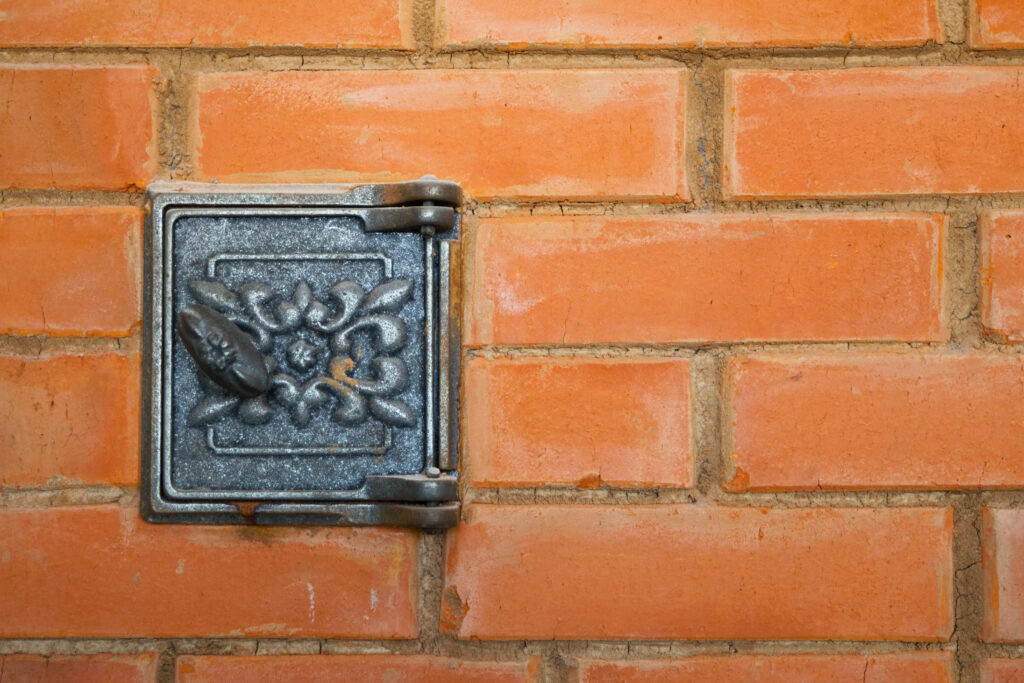What Is a Furnace Ignitor?

The furnace ignitor is a small but mission-critical component of your home’s heating system.
The primary function of the furnace ignitor is to initiate the combustion process that generates heat. It does this by creating either an intense spark or a very high temperature surface, similar to a match igniting a campfire.
This spark or heat ignites the furnace’s fuel source—usually natural gas or heating oil—causing it to burn. The resulting heat is then transferred to the air, which is circulated throughout your home by the blower and ductwork.
Without a properly functioning ignitor, your furnace cannot ignite the fuel, leaving you with a cold house and a system that’s essentially useless for heating.
Table of Contents
The Different Types of Furnace Ignitors
There are several types of furnace ignitors, each with a different method to initiate the combustion process:
- Hot Surface Ignitor (HSI): The most common type in modern furnaces, HSIs are known for their reliability, quiet operation, and energy efficiency. They consist of a ceramic element that heats up rapidly when an electrical current passes through it. Once the element reaches a high enough temperature, it ignites the gas flowing into the burners. HSIs typically last for 5-7 years.
- Direct Spark Ignitor (DSI): As the name implies, DSIs generate a high-voltage spark directly to the gas, similar to a spark plug in a car. They are favored for their durability and longevity, often lasting 10 years or more. DSIs can be a bit noisier than HSIs due to the sparking sound.
- Intermittent Pilot Light Ignitor (IPI): IPIs combine elements of both spark and hot surface ignition. An electrical spark ignites a small pilot flame, which then ignites the main burners. While more efficient than standing pilot lights, IPIs can be prone to wear and tear due to the sparking mechanism.
- Standing Pilot Light Ignitor (SPL): Found primarily in older furnaces, SPLs have a small, continuous pilot flame that ignites the burners when needed. They are less energy-efficient than modern ignitors and require regular maintenance to ensure the pilot light stays lit.
Signs of a Failing Furnace Ignitor
Early detection of a failing ignitor is crucial to prevent further damage to your furnace and avoid potential safety hazards. Here are some key indicators that your ignitor may be on its last leg:
- Furnace Doesn’t Start: If your furnace fails to turn on at all when the thermostat calls for heat, or if it takes multiple attempts to start, a faulty ignitor is a likely cause. This could be due to a worn-out ignitor or an electrical issue preventing it from functioning.
- Short Cycling: If your furnace cycles on and off repeatedly in short intervals, it’s a sign the ignitor may be failing to consistently ignite the gas. This behavior strains the furnace, leading to premature wear and potential breakdowns.
- Unusual Noises: Clicking, grinding, or banging sounds coming from your furnace are not normal and could indicate a problem with the ignitor. Clicking noises might be the ignitor attempting (and failing) to spark, while grinding or banging sounds could indicate issues with the gas valve or other components related to ignition.
- Delayed Ignition: If you hear a loud boom or bang when the furnace finally ignites, it could mean that gas has been building up due to delayed ignition. This is a serious safety hazard that requires immediate attention from a qualified HVAC technician.
If you notice any of these signs, it’s important to contact a professional for diagnosis and repair as soon as possible. Ignoring a failing ignitor can lead to inefficient heating, higher energy bills, and potentially dangerous situations.
What Causes a Furnace Ignitor to Fail?
Several factors can contribute to the failure of a furnace ignitor:
- Wear and Tear: Like any mechanical component, ignitors wear out over time due to the repeated heating and cooling cycles they endure. The average lifespan of a hot surface ignitor (HSI) is 5-7 years, while a direct spark ignitor (DSI) can last 10 years or more.
- Electrical Problems: Power surges, voltage fluctuations, or loose wiring can damage the delicate electronics within the ignitor, leading to malfunction or failure.
- Dirt and Debris Buildup: Dust, dirt, and soot can accumulate on the ignitor over time, impeding its ability to heat up properly or generate a strong enough spark. Regular cleaning and maintenance can help prevent this issue.
- Improper Installation: Using the wrong type of ignitor for your furnace model or installing it incorrectly can lead to premature failure. It’s crucial to have a qualified technician install or replace your ignitor to ensure proper fit and function.
- Other Furnace Problems: In some cases, a failing ignitor may be a symptom of a larger issue within the furnace, such as a malfunctioning gas valve, a faulty control board, or a clogged flame sensor. These problems can prevent the ignitor from working properly or cause it to fail prematurely.
How to Check the Ignitor
Safety First: Before attempting any troubleshooting or repairs, turn off the power to the furnace at the circuit breaker and the gas supply at the shut-off valve.
- Visual Inspection: Remove the furnace’s access panel (consult your owner’s manual for instructions) and visually inspect the ignitor. Look for cracks, discoloration, or any signs of damage. If the ignitor is visibly damaged, it needs to be replaced.
- Testing Continuity with a Multimeter: If there’s no visible damage, you can test the ignitor’s continuity using a multimeter. This device measures electrical resistance.
- Disconnect the ignitor’s wires and set your multimeter to the ohms setting.
- Touch the multimeter probes to the ignitor’s terminals.
- A reading between 20 and 400 ohms usually indicates the ignitor is functioning properly. A reading of zero or a very high number indicates a problem and the ignitor needs to be replaced.
Important: If you’re not comfortable working with electrical components or using a multimeter, it’s best to work with a qualified HVAC technician for handling the repair work.

Request Service
Get started by filling out a request form or by giving us a call.
How Much Does Furnace Ignitor Replacement Cost?
The cost to replace a furnace ignitor typically ranges from $150 to $350, including parts and labor. However, the exact price can vary depending on several factors, such as:
- Type of Ignitor: Some ignitors are more expensive than others. For example, a hot surface ignitor (HSI) typically costs less than a direct spark ignitor (DSI). The brand you choose will also affect the total cost of replacement.
- Furnace Model: Some furnace models may be more difficult to access, requiring more labor to replace the ignitor.
- Labor Costs: HVAC technician rates vary depending on your location and the complexity of the job.
While it might be tempting to try replacing the ignitor yourself to save on labor costs, it’s strongly recommended to leave this task to a qualified HVAC technician. Working with gas and electrical components can be dangerous if not done correctly. A professional can ensure the job is done safely and correctly, preventing further damage to your furnace and ensuring your safety.
Maintenance Tips for Furnace Ignitors
Proper maintenance can help extend the lifespan of your furnace ignitor and prevent premature failure. Here are some essential tips:
- Schedule Annual Furnace Tune-Ups: A professional HVAC technician will inspect and clean your furnace, including the ignitor, as part of a routine maintenance visit. This can help identify potential problems early on and prevent them from becoming major issues.
- Change Air Filters Regularly: Dirty air filters restrict airflow, which can cause the ignitor to overheat and fail. Check your filter monthly and replace it as needed, or at least every three months.
- Keep the Area Around the Furnace Clean: Dust and debris can accumulate on and around the furnace, potentially affecting the ignitor’s performance. Regularly clean the area around the furnace to minimize this risk.
- Monitor for Signs of Failure: Be aware of the signs of a failing ignitor, as mentioned earlier, and address them promptly. Early detection and repair can save you money and prevent more significant problems down the road.
By following these maintenance tips and addressing any issues promptly, you can help ensure your furnace ignitor stays in good working order, providing reliable heat for your home throughout the winter months.
Conclusion
The furnace ignitor plays a critical role in the smooth operation of your heating system. By understanding its function and recognizing warning signs, you can proactively address any issues and prevent disruptions to your comfort during the winter.
Regular maintenance and timely repairs will not only extend the lifespan of your ignitor but also ensure your furnace operates safely and efficiently. If you suspect any issues with your furnace’s ignitor, contact a qualified HVAC technician for prompt diagnosis and repair.

Request Service
Get started by filling out a request form or by giving us a call.
FAQs
How do I clean a furnace ignitor?
Follow these steps:
- Safety First: Turn off power and gas to the furnace.
- Identify Ignitor Type:
- Hot Surface Ignitor (HSI): Gently remove and brush the ceramic element with a soft brush or emery cloth.
- Direct Spark Ignitor (DSI): Clean the electrode tips with a soft brush or emery cloth.
- Pilot Light Ignitor (IPI/SPL): Use compressed air to clear debris from the pilot orifice.
- Reinstall: Ensure the ignitor is securely in place before restoring power and gas.
Note: If unsure, consult your furnace manual or a qualified technician.
Can you reset a furnace ignitor?
In some cases, you can try resetting the ignitor by turning off power to the furnace for a few minutes, then turning it back on. However, if the ignitor is faulty, resetting it won’t fix the underlying problem.
Check Out Additional HVAC Resources
- What Does a Furnace Damper Do?
- Guide to Furnace Installation
- Ductless Mini Splits vs Central AC
- MERV 8 vs Merv 11 vs Merv 13: Which is Best?
- How to Remove Mold From Window AC
Sources

Anna has over six years of experience in the home services and journalism industries and serves as the Content Manager at MyHomePros.com, specializing in making complex home improvement topics like HVAC, roofing, and plumbing accessible to all. With a bachelor’s degree in journalism from Auburn University, she excels in crafting localized, comprehensive guides that cater to homeowners’ unique needs. Living on both coasts of the United States has equipped her with a distinctive perspective, fueling her passion for turning any house into a cherished home through informed, personalized decision-making.

 888-524-2244
888-524-2244






